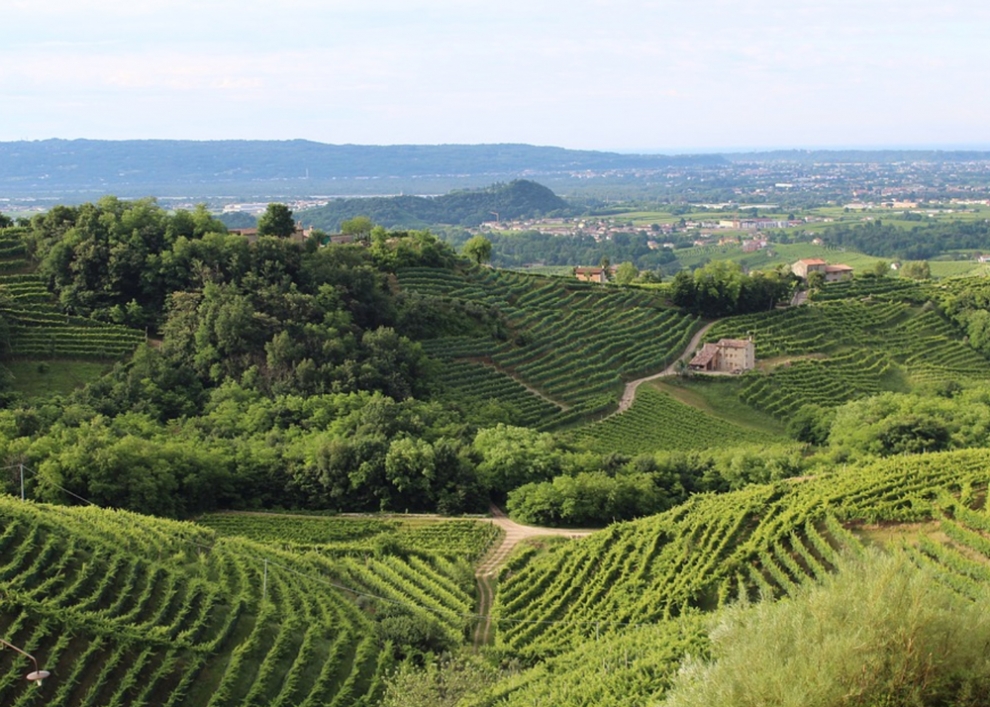Wines
Pet Nat - Primaversa Moscato Bianco igt
A play on words with ‘Primavera’ (Spring) and ‘Versa’: a season which can be experienced with great intensity on our hill, in its perfumes, its colours and its emotions
| Variety: | Moscato Giallo |
| Average age of vines: | 20 years old |
| Plant density: | 5.000logs/he |
| Yield: | 2/2,5 kg |
| Exposure: | East |
| Skeletal soil: | calcareous, clayey |
| Origin: | volcanic |
| Harvest: | manual |
| Fermentation: | natural |
| Vinification: | inox |
| Aging: | inox |
| Malolactic fermentation: | yes |
| Filtration: | no |

Monteversa
The harmonious profiles of the Euganean Hills, which occupy the south-western part of the province of Padua, are a large green oasis, which breaks the flat monotony of the Venetian plain. Their ancient volcanic origin has produced a singular landscape, with suggestive views of the wide valleys, where the view extends from the Alps to the Adriatic Sea. The company a, led by the Voltazza family, is located right in the heart of the Euganean Hills, in the municipality of Vo ‘and enjoys that view, which already fascinated in the 14th century Francesco Petrarca, and is dominated by Monte Versa, a hill that rises right in the heart of this area, an area particularly predisposed to the cultivation of a prestigious viticulture.

Veneto
Veneto’s wines are some of Italy’s best known exports – the names of Soave, Bardolino and Valpolicella have long been associated with eminently drinkable Italian wines. Yet there is a lot more to this region, and indeed a lot more behind the names of its best known wines. With 26 DOCs and 13 DOCGs, Venice’s region has a substantial production of quality wine, as well as well-priced easy-drinking reds and whites bottled as IGTs. One of Italy’s most interesting wines is a product of these three grapes, the deep, dark Amarone della Valpolicella, recently promoted to DOCG status. Made from partly dried grapes in the vineyards north of Verona, it is a structured, complex and heady wine capable of great age that has gained a cult following among the wine industry’s elite.
In Treviso, north of Venice, are the towns of Conegliano and Valdobbiadene where the popular bubbly Prosecco is made using the Charmat method where the second fermentation takes place in large tanks.
In 2009 Prosecco di Conegliano e Valdobbiadene has become DOCG, encouraging reduced yields in the vineyards. Prosecco is also produced in the neighbouring Montello e Colli Asolani zone. White wines from Pinot Grigio, Sauvignon and Chardonnay are gaining in popularity and recent versions are responding well to oak ageing.

Related Wines

Rosso - Animaversa doc
Our ‘Anima’ (Soul) and the name of the hill ‘Versa’ for the
View info
Rosso - Versacinto doc
The name of the hill ‘Versa’ and the name of the town ‘Cinto
View info
Bianco - Versavò Manzoni igt
The name of the hill ‘Versa’ and the name of the town ‘Vò’ t
View info
Rosso Veneto - Vólare igt
Intense red Ruby color, the bouquet is vinous with hints of
View info
Bianco Veneto - Tai igt
Intense yellow color with notes of pear on the nose, beautif
View info